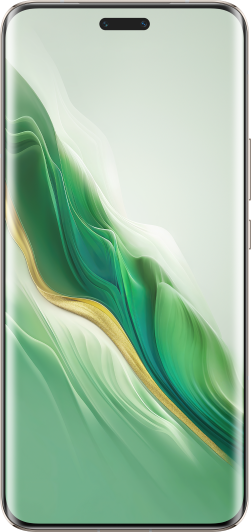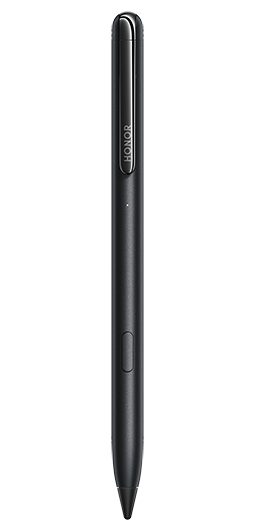TOP

我的荣耀 开启荣耀之旅
To log in to your account, you must first agree to the HONOR PLATFORM TERMS OF USE and HONOR Platform Privacy Statement . If you do not agree, you may only browse the site as a guest.
*You can unsubscribe at any time, Please see our Privacy Statement for details.

What Is AMOLED Display? A Deep Dive Into Modern Screens
Have you ever wondered what makes modern screens so vivid and immersive? From stunning visuals to sleek designs, display technology has come a long way. At the heart of this evolution lies AMOLED, a breakthrough that powers some of today's most advanced devices. But what is AMOLED display, and why is it considered a game-changer in visual technology? Let's dive into this fascinating innovation that's shaping the future of our digital experiences.
What Is AMOLED Display?
An AMOLED (Active Matrix Organic Light Emitting Diode) display uses tiny Light Emitting Diodes (LEDs) to create vibrant images. These LEDs are miniaturized and grouped into red, green, and blue sub-pixels to form individual pixels capable of producing various colors and white light.
The "O" in OLED signifies "organic," referring to thin organic material layers sandwiched between conductors. When an electric current passes through, these layers emit light.
The "AM" or Active Matrix technology enhances precision and speed. Unlike passive matrix systems that use a grid to control pixels, active matrix systems assign each LED a thin-film transistor (TFT) and a capacitor. This design enables quicker response times and sharper control by maintaining the charge of individual pixels between refresh cycles.
How Does AMOLED Work?
AMOLED displays control individual pixels using their TFT backplane. Each pixel can emit light independently, turning on or off as needed. For a pure black color, the sub-pixels are deactivated completely. Sub-pixels are illuminated at full intensity to create white. By adjusting the brightness of red, green, and blue sub-pixels, millions of colors can be displayed. This technology enables AMOLED displays to deliver perfect black levels and exceptionally high contrast ratios.
Advantages of AMOLED Displays
There's no denying that AMOLED displays bring numerous perks to the table.
• Color Brilliance and Range: The organic compounds in AMOLED screens produce a wider color gamut, resulting in more vibrant and lifelike images compared to LCDs.
• Vibrant and Dynamic Visuals: AMOLED displays offer stunning contrast ratios and deep blacks since individual pixels can turn off completely. This gives them unparalleled clarity and realism.
• Energy Efficiency in Dark Modes: Since black pixels are turned off, AMOLED display benefits include energy savings, especially in dark themes. This is particularly advantageous in devices like smartwatches or AMOLED display phones.
• Speed and Smoothness: The active-matrix system ensures fast refresh rates and response times. This makes them ideal for fast-paced content, from gaming to action-packed videos.
• Excellent in Low Light: AMOLED displays perform exceptionally well in dimly lit environments, making them easy on the eyes during nighttime use.
• Flexibility in Design: AMOLED screens are incredibly thin and can even be flexible. This innovation has enabled foldable smartphones and curved display designs.
Disadvantages of AMOLED Displays
Despite their advantages, AMOLED technology does have some challenges.
• Expensive to Produce: The complex manufacturing process of AMOLED displays increases their costs compared to LCD technology.
• Screen Burn-In Risks: Static images can leave permanent marks on the display if shown for extended periods. This “burn-in” effect is a potential drawback for users.
• Power Usage for Bright Content: While energy-efficient for dark themes, bright, white-heavy content can consume more power than an LCD.
• Limited Lifespan: The organic components used in AMOLED screens can deteriorate with use, which may cause changes in color accuracy or a decrease in brightness over time.
• Visibility Issues in Sunlight: AMOLED displays may face challenges in extremely bright settings, where reading the screen under direct sunlight becomes more difficult.
AMOLED vs. OLED vs. LCD: What's the Difference?
Navigating the world of displays can be tricky. Here's how AMOLED compares to other popular technologies.
AMOLED vs. OLED
AMOLED is essentially an upgraded OLED with an active-matrix TFT layer. This layer enhances pixel control, allowing better performance, faster refresh rates, and energy efficiency.
AMOLED vs. LCD
LCD (Liquid Crystal Display) relies on liquid crystals and a backlight to produce images, in contrast to AMOLED, which operates on a self-emissive technology. While LCD screens are less expensive and have longer lifespans, they lack the contrast, vibrancy, and viewing angles that AMOLED offers.
Daily Applications of AMOLED Displays
AMOLED displays aren't limited to just one type of device. Here's where you'll find them in everyday use.
• Laptops: High-end laptops now come equipped with AMOLED displays, offering improved productivity and entertainment experiences.
• Tablets: AMOLED tablets provide excellent color accuracy, making them perfect for creatives and media consumers.
• Smartwatches: For small devices like smartwatches, AMOLED's energy efficiency is invaluable, extending battery life while providing bright, sharp displays.
• TVs: In TVs, AMOLED technology (often referred to as OLED) delivers unbeatable picture quality with true blacks and vibrant colors.
• Digital Cameras: Some high-end cameras feature AMOLED displays in their viewfinders for accurate previews of captured shots.
• Virtual Reality: In VR headsets, AMOLED shines with its quick response times and deep contrast, delivering immersive experiences.
• Smartphones: High-end AMOLED display phones dominate the market thanks to their crisp visuals and energy-saving features. Brands like HONOR smartphone devices use AMOLED to deliver stunning, immersive screens.
To be specific, HONOR has taken this a step further with its new HONOR 200, which features a 6.7-inch Equal-Depth Quad-Curved AMOLED screen. This innovative display offers an immersive FullView experience with a resolution of FHD+ (2664 × 1200), supporting 1.07 billion colors. With HDR peak brightness reaching 4000 nits and a refresh rate of 120Hz, the HONOR 200 ensures crystal-clear, dynamic visuals, making it ideal for media and gaming enthusiasts.
Conclusion
In summary, what is AMOLED display? It's a breakthrough technology redefining how we experience visuals. With its vibrant colors, deep contrasts, and energy-efficient design, AMOLED has become a cornerstone of smartphones, tablets, and more. Though not without limitations, its advantages make it a standout choice for premium devices. From entertainment to productivity, AMOLED enhances everyday life with brilliance and innovation.
FAQs
What is the benefit of AMOLED display?
AMOLED displays offer vibrant colors and excellent contrast ratios. They have fast refresh rates and wide viewing angles, and are energy-efficient when displaying dark content. Their thin and flexible design allows for innovative devices like foldable screens. These features make AMOLED ideal for creating immersive visual experiences on smartphones, TVs, and more.
Which is better, AMOLED or OLED?
AMOLED is generally better than OLED due to its active-matrix backplane, which provides better pixel control, faster refresh rates, and improved energy efficiency. While both deliver high contrast and vibrant colors, AMOLED's advanced features make it more suitable for modern devices like smartphones and tablets, offering superior performance and flexibility.
Is AMOLED better for eyes?
Yes, AMOLED displays may be gentler on the eyes. Each pixel is individually lit, allowing finer brightness adjustments and producing deep blacks by turning off pixels entirely. This reduces glare and strain, especially in dim or fluctuating light. However, screen settings and usage habits also significantly impact eye comfort.
Source: HONOR Club

Subscribe For Updates - Special Offers And More.
By providing your email address, you consent to receive the latest offers and information on Honor products, events and services through email or advertisement on third-party platforms. You can unsubscribe anytime according to Chapter 5 of HONOR Platform Privacy Statement.
Consumer hotline

80004444408 Monday to Sunday,9:00am-9:00pm
ae.support@honor.com
Copyright © HONOR 2017-2025.All rights reserved.
We use cookies and similar technologies to make our website work efficiently, as well as to analyze our website traffic and for advertising purposes.
By clicking on "Accept all cookies" you allow the storage of cookies on your device. For more information, take a look at our Cookie Policy.
Functional cookies are used to improve functionality and personalization, such as when playing videos or during live chats.
Analytical cookies provide information on how this site is used. This improves the user experience. The data collected is aggregated and made anonymous.
Advertising cookies provide information about user interactions with HONOR content. This helps us better understand the effectiveness of the content of our emails and our website.























































